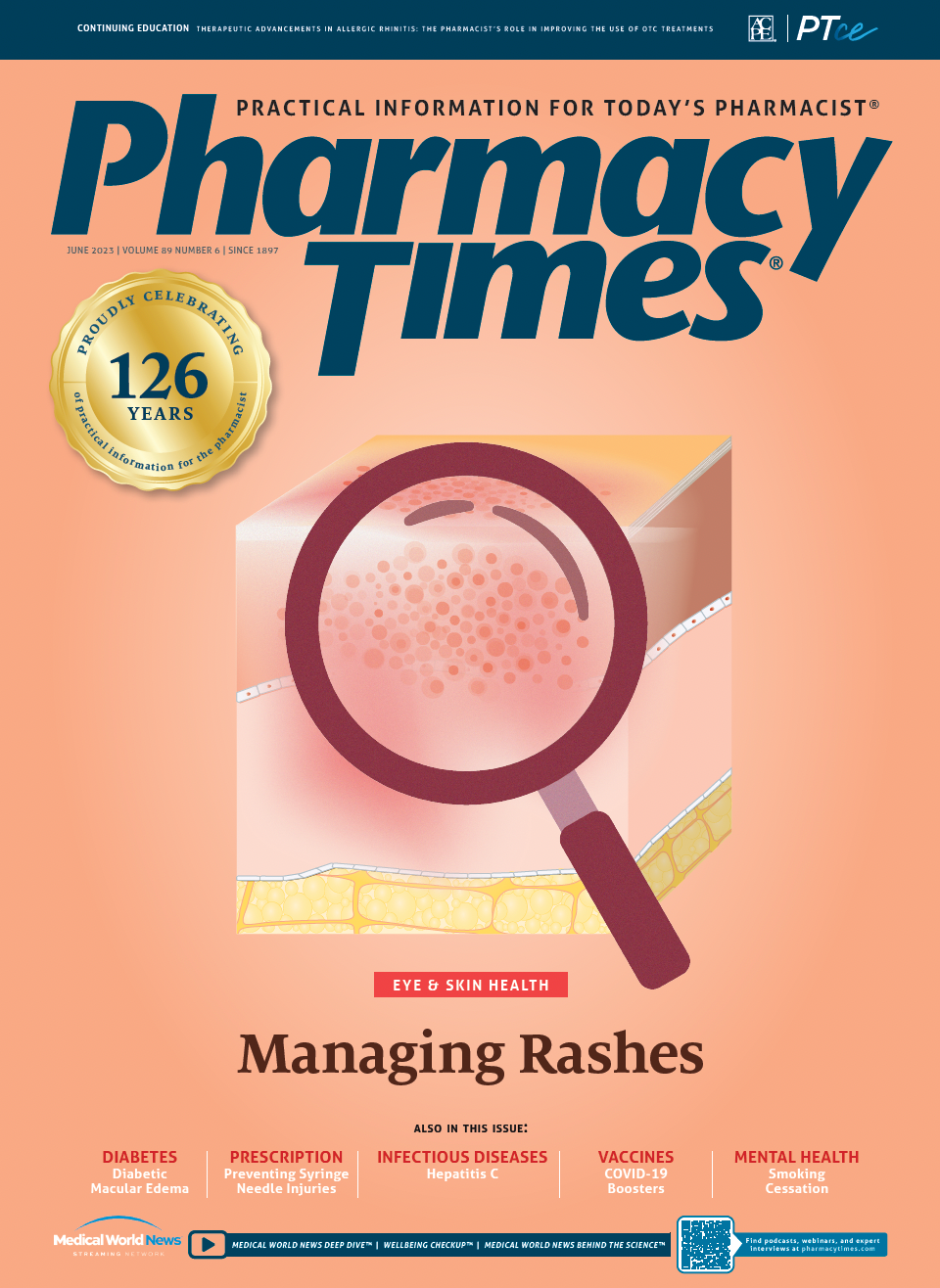Publication
Article
Pharmacy Times
Nurses Experience Needlestick Injuries With Evenity Syringe Needle
Author(s):
Errors risk transmission of blood-borne pathogens, including HBV, HCV, HIV, to health care providers, patients.
The Institute for Safe Medication Practices (ISMP) has received multiple reports of potential and actual needlestick injuries involving romosozumab-aqqg (Evenity), risking the transmission of blood-borne pathogens such as hepatitis B virus (HBV), hepatitis C virus (HCV), or HIV to health care providers and patients.
Image Credit: Adobe Stock - Gorodenkoff

Romosozumab is indicated for the treatment of osteoporosis in patients who are intolerant of or have failed other available osteoporosis therapies and for postmenopausal women at high risk for fracture. The medication, manufactured by Amgen, is supplied in a carton containing 2 prefilled syringes and is labeled to be administered by a health care provider. The administration of both syringes from a single carton is needed to give the total dose of 210 mg subcutaneously.
In one report, a nurse in an outpatient infusion setting experienced an accidental needlestick injury when administering a subcutaneous injection of romosozumab to a patient. The needles on romosozumab syringes lack a safety device; they are not retractable or even removable, so the nurse was unable to change the needle to one that has a safety guard. Other organizations have reported to the ISMP the same concern about accidental needlesticks with this product. All the reports noted the lack of a safety guard as the contributing factor for actual and potential needlestick injuries and recommended that Amgen add one. A few cases indicated that nurses needed an initial needlestick exposure laboratory panel and periodic monitoring to detect any presence of the abovementioned viruses.
Note that the Occupational Safety and Health Act (OSHA) of 1970 requires compliance with OSHA standards to institute safety measures in workplaces where there is occupational exposure to blood or other potentially infectious materials. Under the standard, as revised by the Needlestick Safety and Prevention Act, employers are required to evaluate, select, and use engineering controls (eg, sharps with engineered sharps-injury protections or needleless systems) to eliminate or minimize exposure to contaminated sharps.1 Technically, if an injectable does not allow the use of an engineering control, such as a needle with a safety guard, then the product should not be used in that facility. Using injectables without safety needles when providing patient care puts organizations at risk, especially with products, such as Evenity, that have labeling stating it should be administered by a health care provider. OSHA also requires that employers maintain a log of all work-related needlestick injuries where there may be contamination with another individual’s blood or other potentially infectious material.
Some may think an accidental needlestick is a low-risk situation for a health care professional, that it will not happen here or will not cause an infection. Although the actual risk of disease transmission may be low, needlestick injuries can still happen, and disease transmission certainly can occur and be devastating. Organization protocols detail steps that address needlestick injuries and have an associated cost, take up precious resources, and cause downtime for nurses and other health care workers. There is also a need for postexposure prophylaxis for HBV and HIV, along with associated pretreatment laboratory testing.2
At least 1 product, leuprolide acetate for depot suspension (Lupron Depot-Ped), is labeled “must be administered by a health care provider” and it has a safety needle.3
However, there are other marketed prefilled syringe products, aside from romosozumab, without needle safety guards. Of course, much of this safety issue could be avoided if all prefilled syringes had engineering controls that provided protection against needlestick injuries. The ISMP has asked the FDA and manufacturers to address this concern with a requirement for a needle with a safety guard on all prefilled syringes. The ISMP also spoke with Amgen directly about the need for a needle safety guard for romosozumab. Alternatively, companies can make prefilled syringes available without an affixed needle, so that a safety needle can be placed on the syringe before use. This would allow adherence with the OSHA requirement and help protect against injury from an uncovered needle after administration. It would also help prevent injury should any of these products make their way into garbage bins or other forms of common waste, which may expose animals, children, and others to unintended needlestick injuries.
References
1. Quick reference guide to the bloodborne pathogens standard. OSHA. Accessed May 2, 2023. www.osha.gov/bloodborne-pathogens/quick-reference
2. National Occupational Research Agenda (NORA). Stop sticks campaign. CDC. February 26, 2019. Accessed May 2, 2023. www.cdc.gov/nora/councils/hcsa/stopsticks/whattodo.html
3. Lupron Depot-Ped. Prescribing information. AbbVie Inc; 2023. Accessed May 2, 2023. www.rxabbvie.com/pdf/lupronpediatric.pdf
About the Author
Michael J. Gaunt, PharmD, is a senior director of error reporting programs and editor at the Institute for Safe Medication Practices (ISMP) in Horsham, Pennsylvania. He also serves as the editor of the monthly ISMP Medication Safety Alert! Community/Ambulatory Care newsletter.







